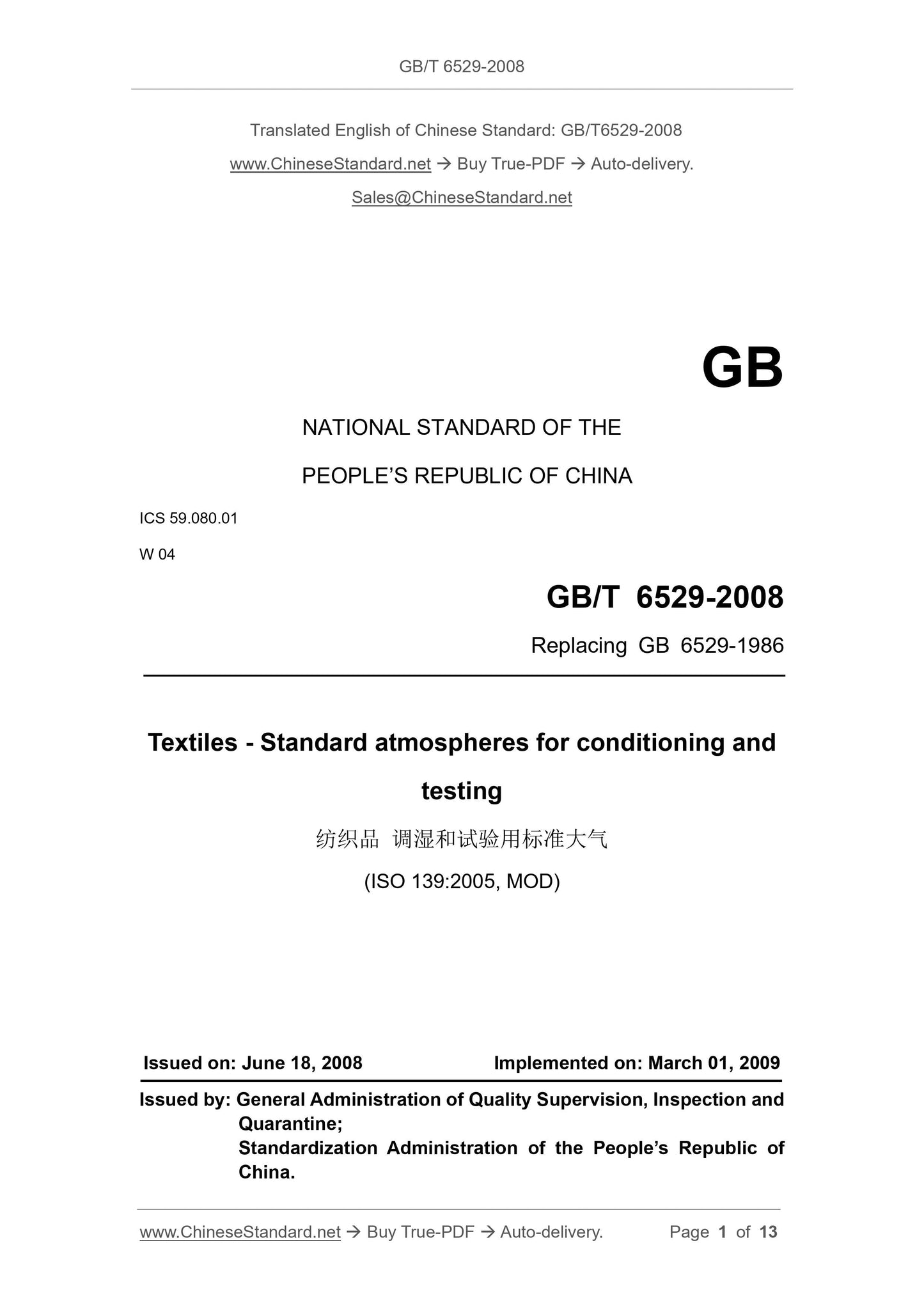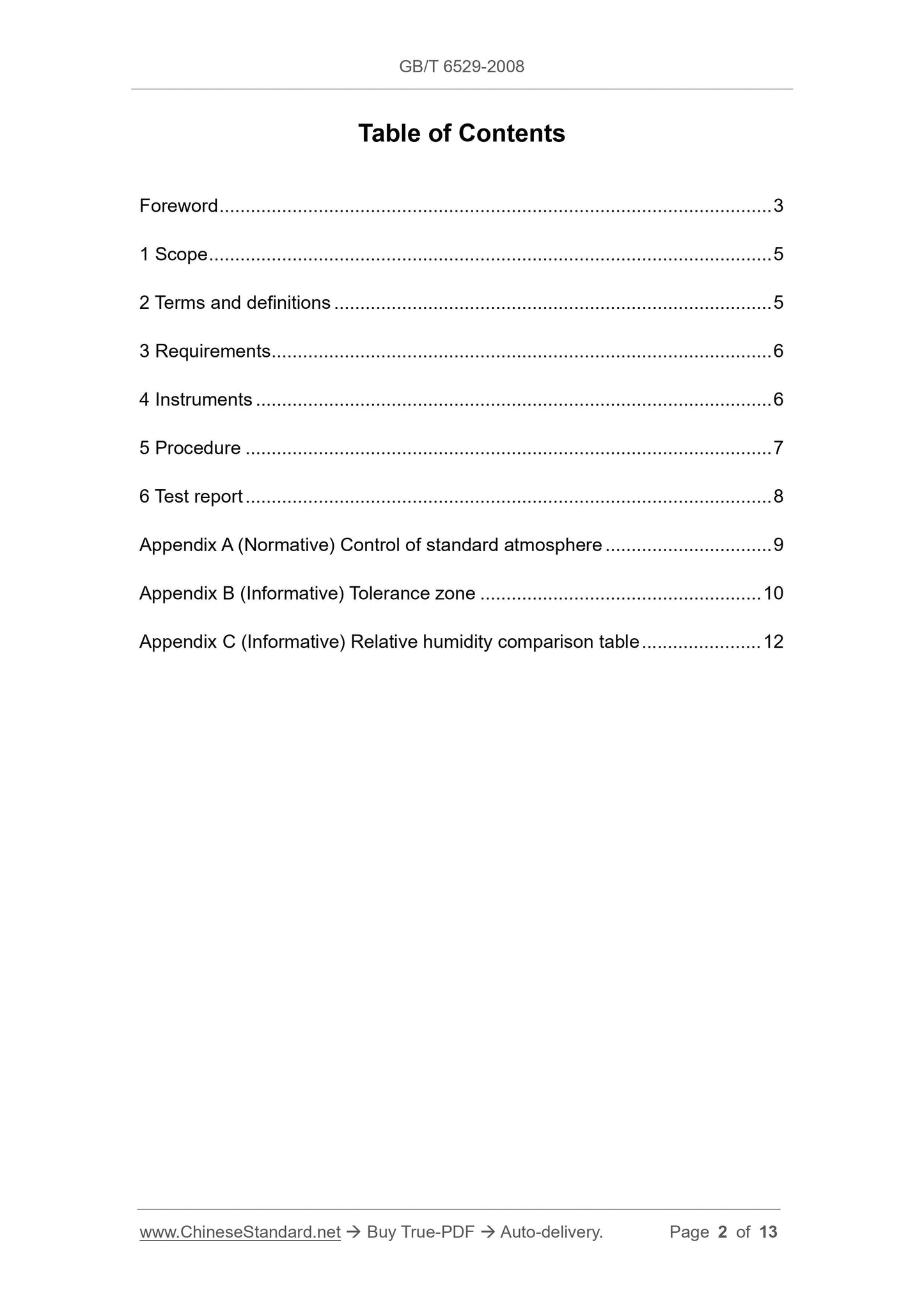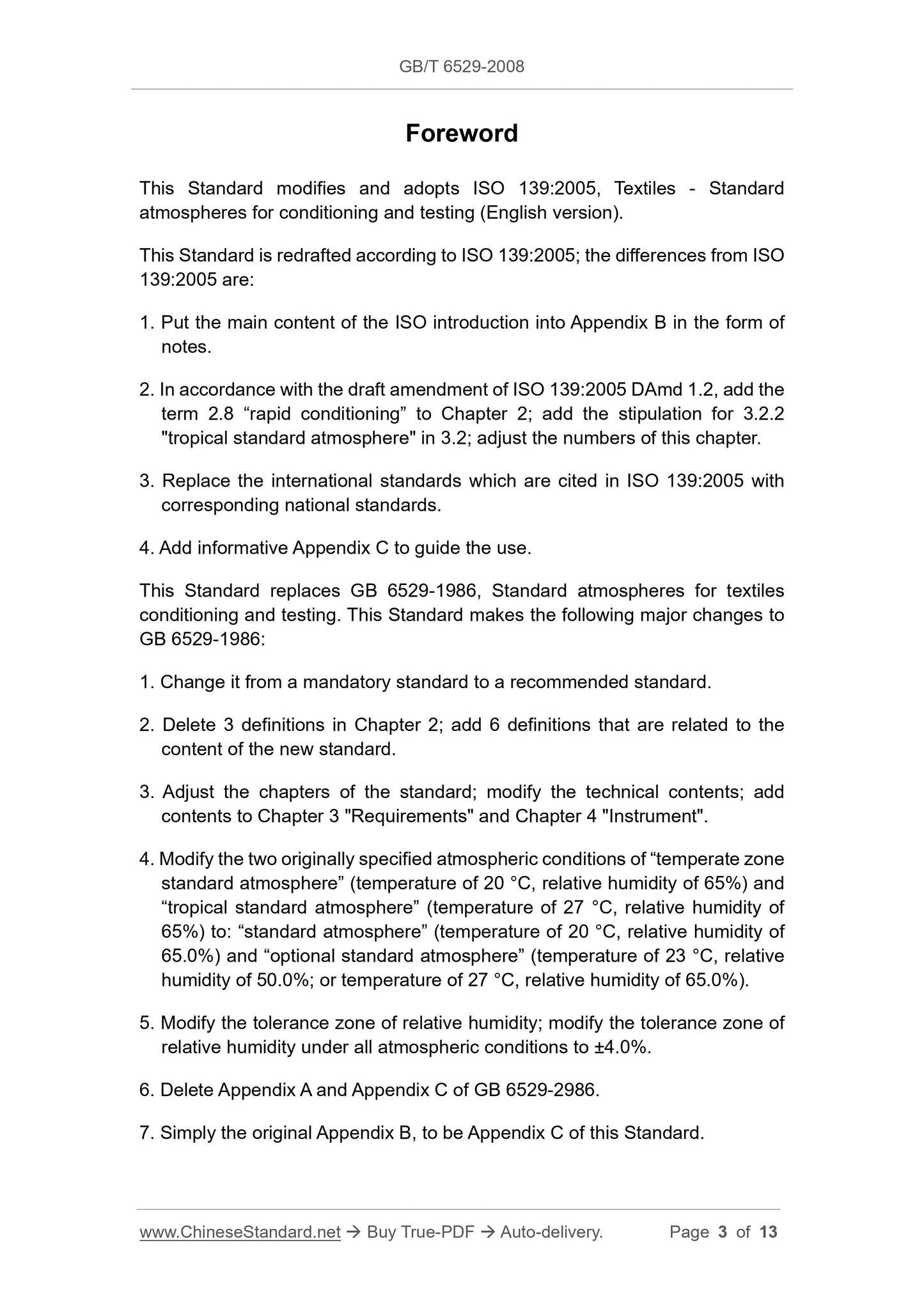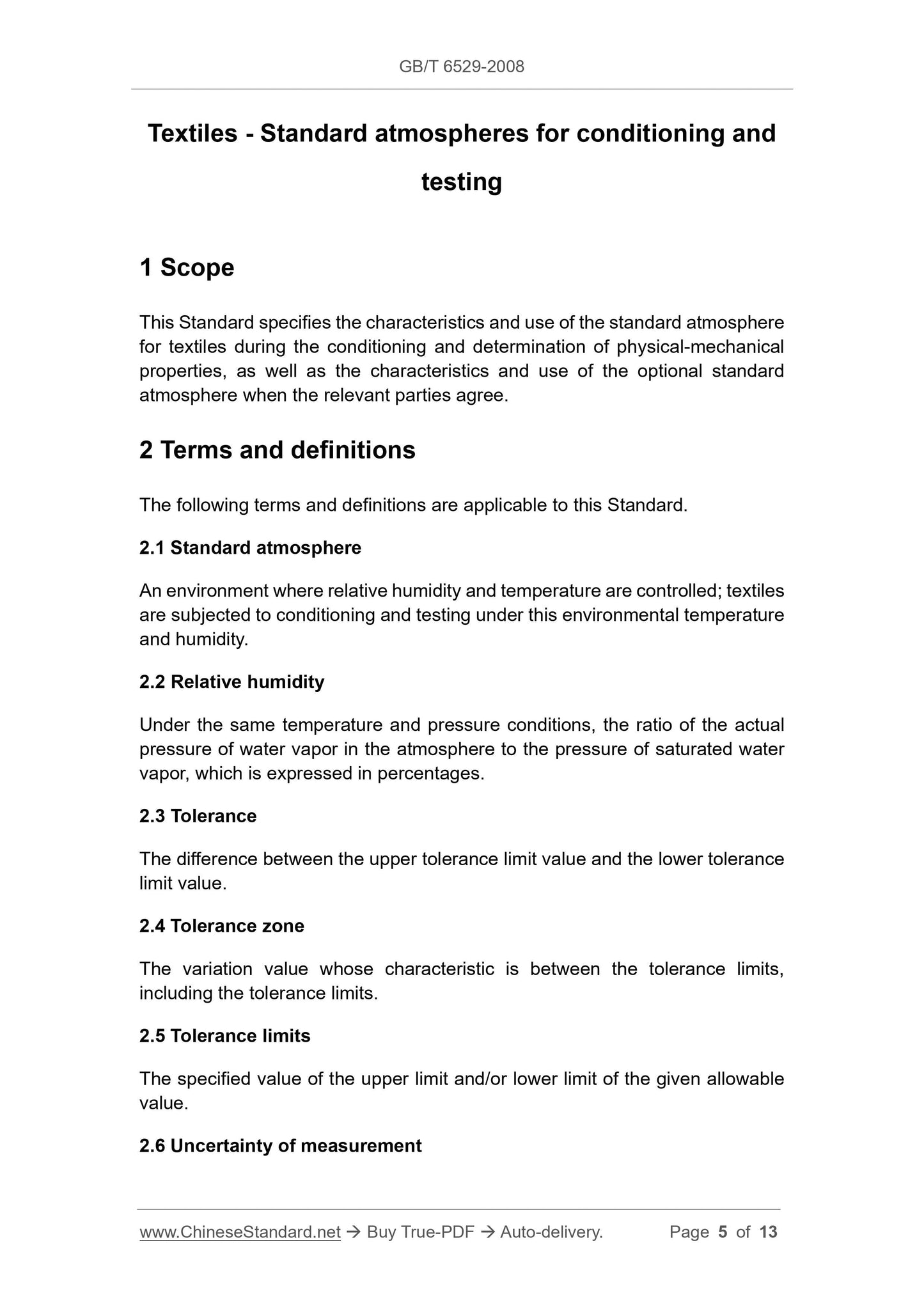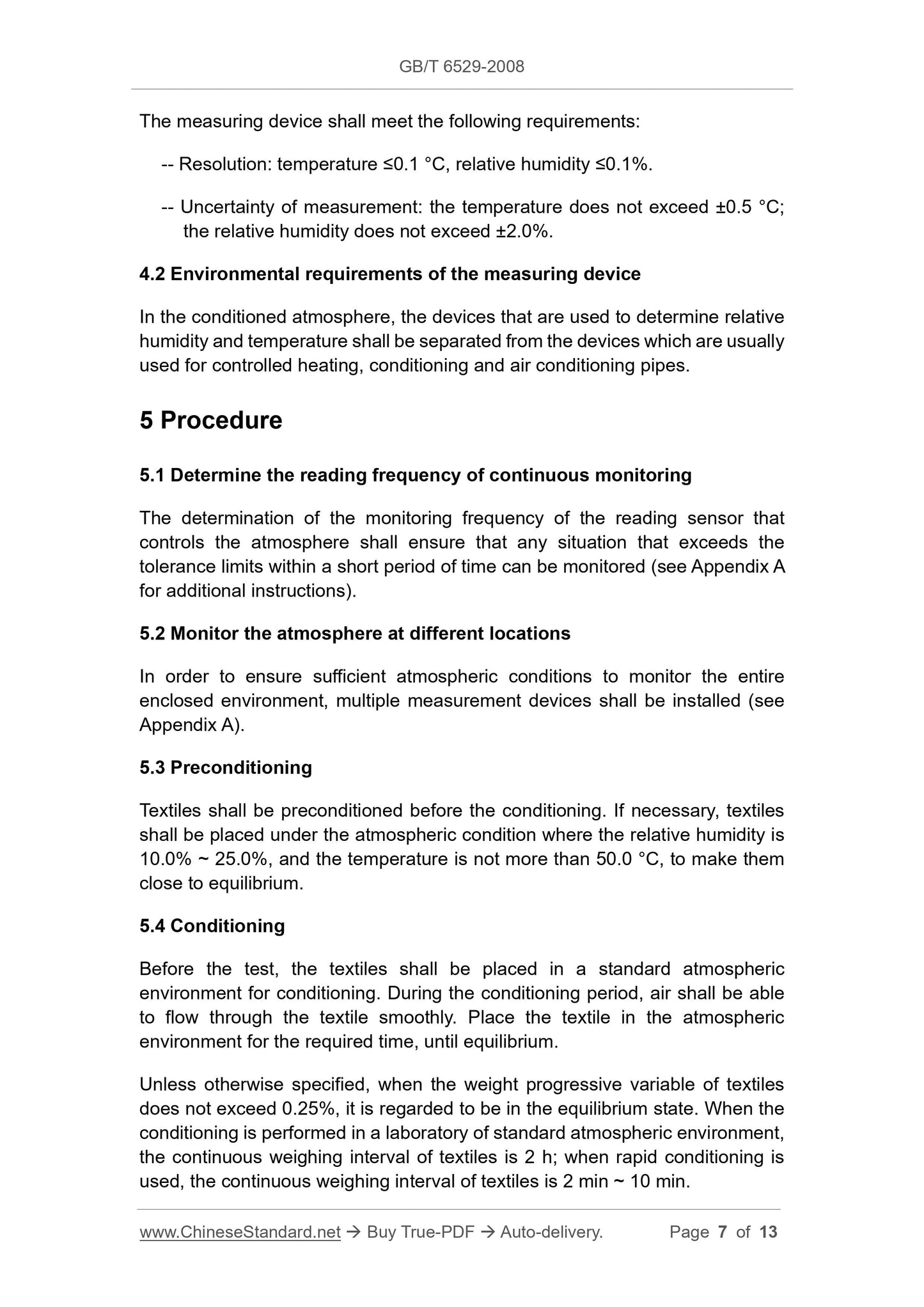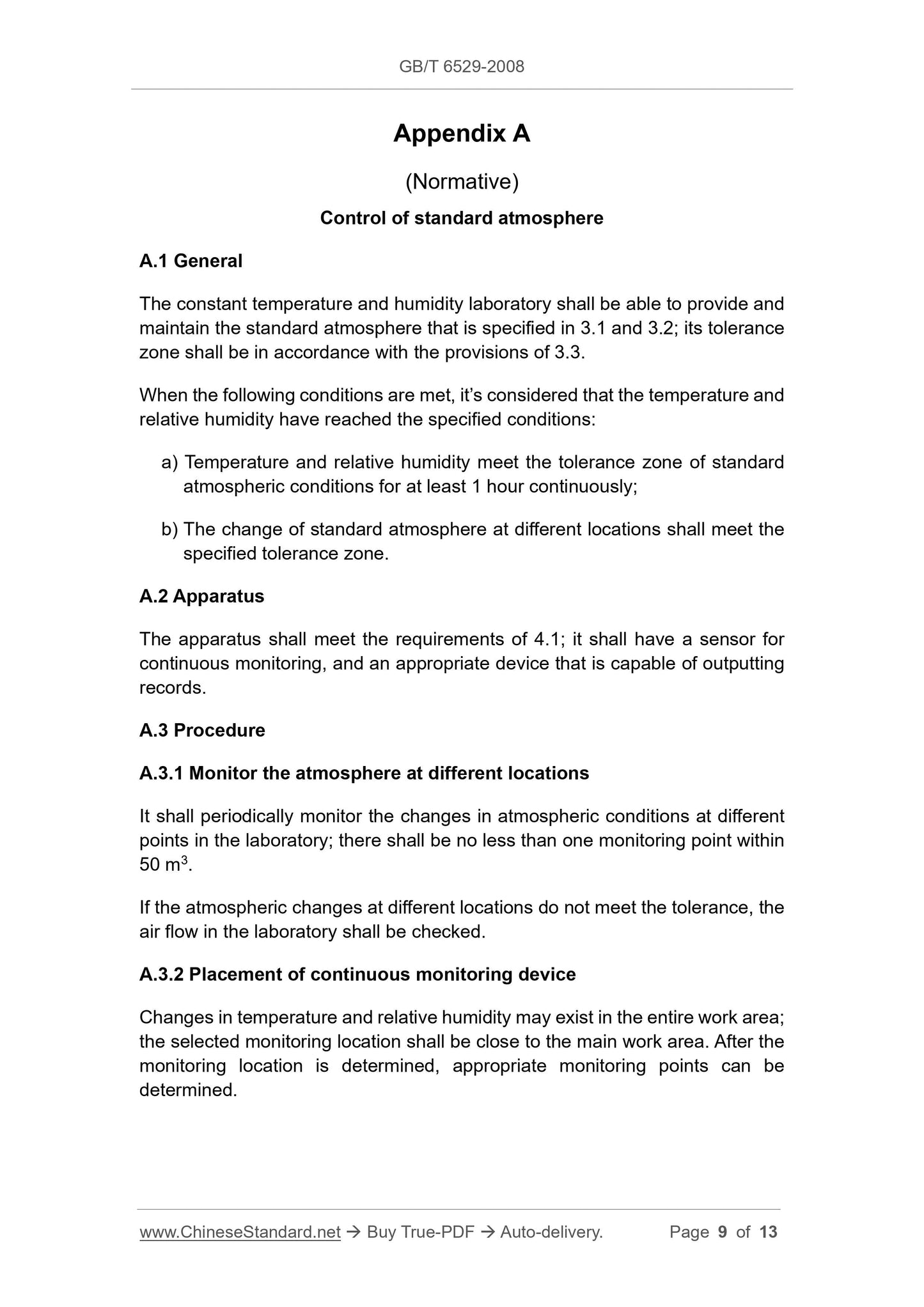1
/
of
6
www.ChineseStandard.us -- Field Test Asia Pte. Ltd.
GB/T 6529-2008 English PDF (GB/T6529-2008)
GB/T 6529-2008 English PDF (GB/T6529-2008)
Regular price
$70.00
Regular price
Sale price
$70.00
Unit price
/
per
Shipping calculated at checkout.
Couldn't load pickup availability
GB/T 6529-2008: Textiles -- Standard atmospheres for conditioning and testing
Delivery: 9 seconds. Download (and Email) true-PDF + Invoice.Get Quotation: Click GB/T 6529-2008 (Self-service in 1-minute)
Newer / historical versions: GB/T 6529-2008
Preview True-PDF
Scope
This Standard specifies the characteristics and use of the standard atmospherefor textiles during the conditioning and determination of physical-mechanical
properties, as well as the characteristics and use of the optional standard
atmosphere when the relevant parties agree.
Basic Data
| Standard ID | GB/T 6529-2008 (GB/T6529-2008) |
| Description (Translated English) | Textiles -- Standard atmospheres for conditioning and testing |
| Sector / Industry | National Standard (Recommended) |
| Classification of Chinese Standard | W04 |
| Classification of International Standard | 59.080.01 |
| Word Count Estimation | 9,913 |
| Date of Issue | 2008-06-18 |
| Date of Implementation | 2009-03-01 |
| Older Standard (superseded by this standard) | GB 6529-1986 |
| Adopted Standard | ISO 139-2005, MOD |
| Regulation (derived from) | National Standard Approval Announcement 2008 No.10 (Total No.123) |
| Issuing agency(ies) | General Administration of Quality Supervision, Inspection and Quarantine of the People's Republic of China, Standardization Administration of the People's Republic of China |
| Summary | This standard specifies the textile and humidity measurement in physics, standard atmospheric properties and mechanical properties when used, as well as interested parties in the case agreed, the optional standard atmospheric characteristics and use. |
Share
